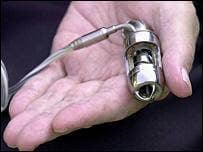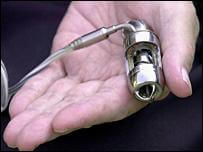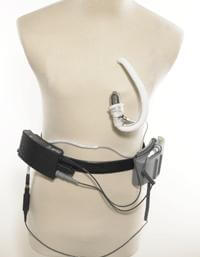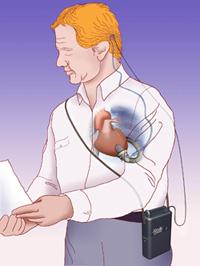Italian Boy Receives Permanent ‘Artificial Heart’ Implant

Share
A fifteen year old boy in Italy has become the youngest to receive an 'artificial heart' implant on a permanent basis. After a 10 hour surgery on September 30th at Bambino Gesu Hospital in Rome, the young man is said to be in stable condition and talking. The unnamed minor suffers from Duchenne syndrome, a condition where muscle tissue degrades, and was ineligible for a traditional heart transplant. To save his life, doctors have installed a Jarvik 2000 Ventricular Assist Device in his left ventricle to help pump blood. Unlike most children who receive such a device, the Italian boy will likely never have it removed. Previous recipients of these kinds of 'artificial hearts' for permanent use have been adults. According to Telegraph.co.uk, officials think the young man will likely have 20-25 years of 'normal' life available to him thanks to the implant. His continued success is a testament to the growing range of patients who can benefit from becoming a medical cyborg.
The implant used for the 15 year old Italian boy is completely contained inside the boy's chest, to lower risks for infection. The Jarvik 2000 Ventricular Assist Device used in the operation is being referred to as an artificial heart, but it's not a multi-chamber system like the SynCardia models we've covered before. Jarvik's VAD is inserted inside the left ventricle and connects to the aorta. It's an electrically powered hydraulic pump capable of handling the full blood flow of a normal man. The model used in the Italian boy is only 4 cm long and weighs just 400g. Its power supply is actually routed to a plug behind his left ear, and is connected to a battery that will be worn on his belt and recharged overnight like a cell phone.
As always happens when surgeons push their skills into new frontiers, there's been claims as to how this procedure was a 'first'. Dr. Antonio Amodeo, who led the team performing the operation, was quoted by the Telegraph as stating that, "This is the first time such a device has been placed in a young child." The Daily Mail points out, however, there have been younger recipients of simpler heart implants, and equally young recipients who received similar implants on a non-permanent basis. However, such competition is largely irrelevant in my opinion. The real issue is that complex heart implants are being placed into younger, more delicate patients, with success, and without the necessity of removing the devices later. Using heart implants as permanent solutions are becoming a more widely accepted technique.
Be Part of the Future
Sign up to receive top stories about groundbreaking technologies and visionary thinkers from SingularityHub.


That's a trend we've seen develop for a while now. Full-sized artificial hearts have been implanted into patients for the better part of a decade. Earlier in the summer we discussed a man in Arizona who was able to leave the hospital with an artificial heart thanks to an external portable power supply. These devices are becoming more mobile and functional.
A decade ago, an artificial heart of any kind was still a prototype technology. Now they are being implanted in high risk patients. In the future we can expect such devices to become more self sufficient, completely mobile, and able to last in a patient for their entire lives. Research into powering implants through blood glucose may one day remove the need for any kind of external power supply. Mechanical replacements for organs will work as well as our natural ones, with little risks. The recent work in Italy can be seen as another step towards this new wave of cybernetics. Best wishes to the unnamed patient and let's hope that his success marks the beginning of many more young people with muscular dystrophy and heart conditions being saved with artificial heart implants.
[image credits: EPA via Telegraph.co.uk, Jarvik]
[source: AFP, Bambino Gesu Press Release, Telegraph.co.uk, Daily Mail]
Related Articles

Single Injection Transforms the Immune System Into a Cancer-Killing Machine

This Light-Powered AI Chip Is 100x Faster Than a Top Nvidia GPU

New Gene Drive Stops the Spread of Malaria—Without Killing Any Mosquitoes
What we’re reading


